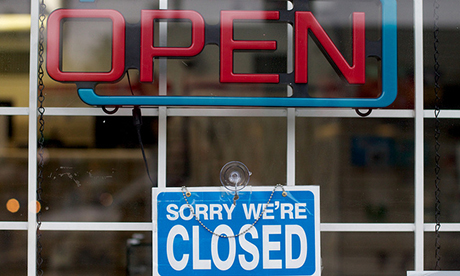
Image: Alan Levine [CC BY 2.0] via Flickr
Earma 2021: Experts explain why embedding open science in grant proposals reaps rewards
Science funders are slowly dismantling the barriers that prevent research outputs from being disseminated beyond the pages of subscription journals. While many researchers welcome this direction of travel, it also has implications for winning funding.
With various funders taking steps to ensure that content is made freely available online, they are increasingly turning the magnifying glass on researchers, looking for evidence that academics are working to ensure their outputs have an impact in the wider world.
Speaking at the annual conference of the European Association of Research Managers and Administrators on 16 April, researchers Ivo Grigorov and Romain Féret outlined the benefits of embedding open science in research funding applications from the get-go.
They argued that including dissemination and communication plans throughout a project, as well as open data, not only helped projects in the long run by making them more widely accessible but could also help win over funders.
Changing habits
Grigorov, a researcher on open science at the Technical University of Denmark, said that solid proposals too often failed because scholars did not give enough thought to incorporating open science in their projects. “I’m surrounded by applicants whose research is excellent and who are very capable of scoring five out of five, but they really lose points on impact,” he said.
Grigorov has firsthand experience, having conducted a workshop for researchers on incorporating open-science practices into grants at his university. “We asked them if they’d let us hack their proposal all the way from research excellence, methods and impacts…to implementation,” he said.
But changing habits can be a long process. “The people who most need me don’t come in the office and I don’t have the resources to change the culture yet,” Grigorov said. Still, he’s hopeful that Horizon Europe, the EU’s seven-year R&D programme, will change the research culture so that more academics embrace open science.
Increasing expectations
Under Horizon Europe, the European Commission has new expectations of grantees. According to a Commission document on open science, researchers are expected to make a plan for dissemination and exploitation of their work that “cuts across the overall project life cycle, from the proposal until after the end of the project”.
Grantees will be required to submit this plan during the first six months of the project and will be encouraged to report on dissemination practices, including management of intellectual property. In other words, the Commission is going to be looking for evidence that researchers have given thought to open science from the moment a proposal lands in Brussels.
For Grigorov, the European Commission is ahead of the pack in the way it is treating open science. He said that the Horizon Europe grant template, which details communication measures expected of projects, was a harbinger of what funders were increasingly demanding from researchers. “It reflects a firm belief at funder level that the whole process of science should be open,” Grigorov said.
Reviewer appeal
According to Féret, a librarian in charge of open access and research data management at the University of Lille in France, meeting funder expectations on open science is not impossible for researchers but it does require a bit of forethought. Not only that, but flagging open-science provisions in a proposal can bolster a project’s appeal to reviewers.
“Taking open science into account is a good way to improve how reviewers assess the project’s feasibility and that the open science commitments are actually relevant and will be done,” he said.
Embedding open science early on in a project also has the benefit of proving that researchers are taking a long-term, anticipatory view of their work, Féret said. “Comprehensive dissemination strategies prove to be the most convincing for reviewers, as well as the most efficient,” he advised.
But, most importantly, both Féret and Grigorov said that academics should avoid making open science an afterthought when writing grant proposals. The researchers cautioned against waiting until the later stages of developing grant applications to plan in dissemination strategies, since such plans can be easily forgotten when filling in a template.
“The idea is really to make open science as concrete as possible through actions,” said Féret. Doing this, he said, will “prove to reviewers that open science is not only a commitment but actually a part of the project”.
Big picture
While both speakers said that getting some researchers to accept their support on embedding open science in proposals was challenging, Féret noted that once principal investigators realised the benefits, they often returned for help on dissemination in future projects.
Extra dissemination requirements can seem pedantic for scientists short on time, and Féret said that he was sometimes challenged on the benefits of doing additional work on open science in grant applications.
But for funders, such requirements underpin a desire to make headway on grand challenges, from infectious diseases to space exploration. And opening up scientific practices goes a long way toward improving transparency in research for wider society.
“We need to breathe confidence in the scientific process itself,” Grigorov said.